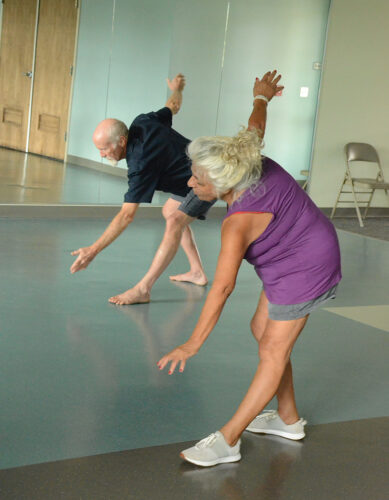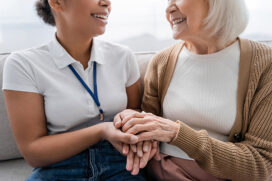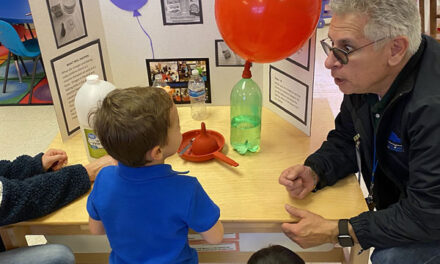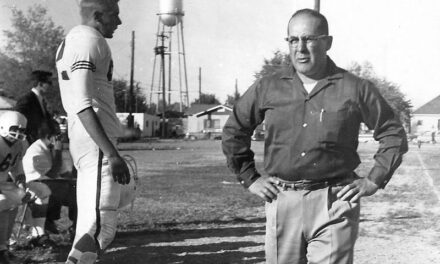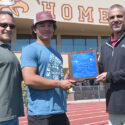Senior Source
Grasp Bird’s Tail. Embrace Tiger. Parting Horses Mane.
These are not nominees for this year’s Best Foreign Motion Picture. They are actually tai chi movements performed by seniors at the Fred Luna Multi-Generational Center in Los Lunas.
Upon entering the fitness room at the center during a tai chi class, a feeling of peace washes over you. The room is bathed in natural light and soothing music plays softly in the background.
A group of senior citizens stand in rows, some utilizing chairs for support, all focused on mimicking the instructor’s slow and intentional movements in unison.
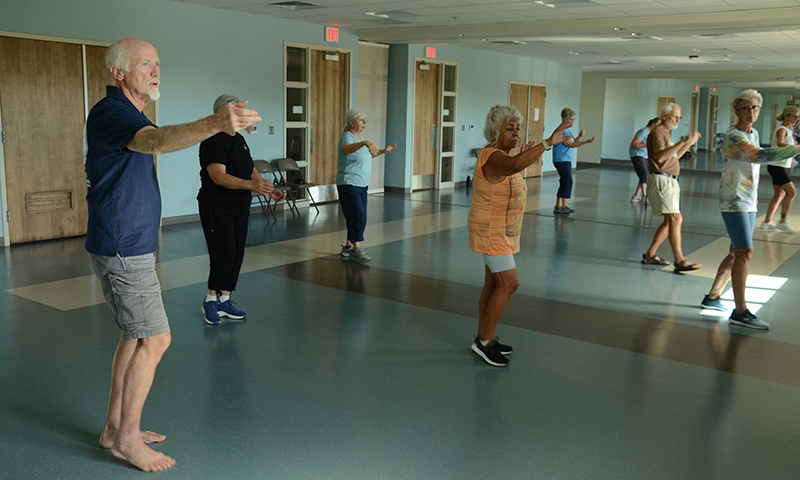
Tai chi instructor Stan Rawcliffe, left, teaches a group of seniors at the Fred Luna Multi-Generational Center in Los Lunas.
(Jesse Jones | News-Bulletin photos)
Tai chi Chuan, commonly known as tai chi, is an internal martial art that combines meditation, slow fluid movements and deep breathing. It originated in China during the 17th century and is now practiced by nearly 250 million people worldwide.
Research-based programs have shown individuals who practice tai chi may have a lower risk of experiencing falls or fall-related injuries, including death, compared to those who do not.
“I had my tumble not too long ago and I’m in fairly decent condition, but I took a whopper,” said Stan Rawcliffe, the tai chi instructor at the Fred Luna Multi-Generational Center in Los Lunas. “My neck — from my skull down my spine — was just frozen, but I credit tai chi with the recovery that I’ve had. The strength and flexibility that I’m getting from it are what enabled me to recover as fast as I have.”
Studies from around the world have shown that tai chi benefits people of all ages but for adults 65 and older the benefits could be lifesaving.
According to the New Mexico Department of Health, falls are the leading cause of accidental injury death among adults 65 years of age and older in the United States and in New Mexico. In 2019, the New Mexico Bureau of Vital and Health Statistics reported 347 deaths due to falls among adults 65 and older residing in New Mexico.
Some of the health rewards tai chi offers senior citizens include, but are not limited to, gaining strength and balance, mind-body awareness, arthritis pain management and it may even potentially improve people’s psychological well-being.
“There are just tons of benefits but strength and balance is the main thing,” says Rawcliffe. “I tell people who are just getting started that, ‘I really don’t care how you move. I’m just happy that you’re moving and then we’ll help you develop and get your movements refined.’”
Studies have found people who practice tai chi regularly use less energy and will get the same, if not more, benefits as a brisk walk. Even for healthy adults, endurance of the heart and lungs may improve with tai chi practice.
Body awareness is very important as people get up in age, especially for those seniors who use walkers or canes for mobility.
Rawcliffe says falls may occur if people are not conscious of their feet movements. People’s legs tend to get tangled up when turning around while using walkers because they are not aware of what their feet are doing.
Tai chi requires people to focus on each movement, which can prevent falls and provide meditative benefits, unlike other physical activities.
According to Harvard Health, tai chi can alleviate symptoms of osteoarthritis, rheumatoid arthritis, fibromyalgia, tension headaches, and other painful conditions, supported by solid research.
Rheumatologists have been studying the health benefits of tai chi as a therapy for rheumatoid arthritis. For centuries, the martial art form has been recognized as an effective therapy.
It helps to develop that mind-body connection because you have to learn a new way to move and that helps your memory which helps your mind.
Tai chi offers mental benefits, such as improved cognition, mood and focus, decreased stress and anxiety and enhanced sleep quality.
“I think the whole point of tai chi is to let your mind go a little bit and just think about breathing in and breathing out when you’re doing the exercises,” said Len LaClair, a tai chi student from Los Lunas said. “It does settle your mind and makes you more relaxed.”
There was a clinical trial in China that showed there was improved cognitive function in older adults with type 2 diabetes, who had mild cognitive impairment.
There also have been studies showing that tai chi could be effective in helping people reduce insomnia. The studies showed that doing moderate exercise helps with insomnia, but if seniors with reduced mobility are not able to exercise, tai chi is an excellent replacement.
Although there are many forms of tai chi practiced throughout the world, most styles trace their lineage to one of the five traditional schools of tai chi — Chen, Yang, Wu (Hao), Wu and Sun.
The style of tai chi that Rawcliffe teaches is the Yang style. The Yang style is regarded as the most popular style in the world and was developed more than 200 years ago by Yang Luchan.
Once the tai chi movements are learned, the practitioner puts them together in choreographed solo routines. These routines are called forms — long and short.
The long form of the Yang style takes about 16 minutes to complete. Rawcliffe teaches a short form with the seniors. It takes about five minutes to get through.
Rawcliffe said they are removing repeated and challenging kick sections, and making the program more accessible for seniors or anyone else who wants to learn.
“Because as you get to be in your 70s, you just can’t do those punches. You can’t do flying sidekicks,” said Rawcliffe.
If you are a senior and you would like to join a tai chi class or just check it out, Stan Rawcliffe teaches tai chi classes at 9 a.m. on Tuesdays, Thursdays and Fridays at the Fred Luna Multi-Generational Center, at 197 Don Pasqual Road, Los Lunas.
Jesse Jones lives in Albuquerque with his wife and son. Jesse graduated from of the University of New Mexico twice. This spring, he graduated with a degree in multimedia journalism and, in 2006, he received a bachelor’s degree in university studies with an emphasis in photojournalism. He is a current fellow of the New Mexico Local News Fund.
